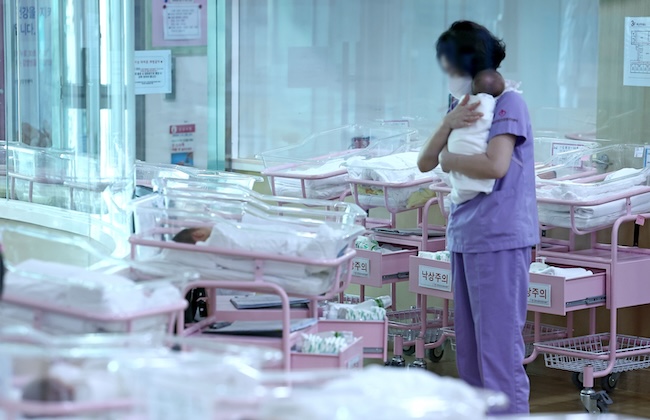
A new report has projected that South Korea’s total population, which stood at just over 51 million last year, could plummet to around 39 million by 2065 due to persistently low birth rates in the country. (Image courtesy of Yonhap)
SEOUL, May 7 (Korea Bizwire) – A new report has projected that South Korea’s total population, which stood at just over 51 million last year, could plummet to around 39 million by 2065 due to persistently low birth rates in the country.
The 2024 Population Report, published on May 6 by the Korean Peninsula Population Institute for Future (KPPIF), forecasts that the working-age population between 15 and 64 years old will decrease by around 10 million over the next two decades.
The institute warned that such a decline in the working-age population could lead to a contraction in domestic consumption, increased labor costs and an overall slowing of economic growth.
“The reduction in the working-age population is expected to trigger a collapse of the domestic market and entrench long-term low growth,” the report stated.
According to the projections, the median age in South Korea, currently at 45.5, will rise to 50.3 by 2031, indicating that half the population will be over 50 years old at that point.
The number of 7-year-olds enrolling in elementary school is predicted to plunge from 430,000 last year to 220,000 in 2033, while the number of 20-year-old men eligible for military service could fall from 260,000 to 190,000 by 2048.
Additionally, the report estimates the population aged 65 and over will peak at 18.91 million in 2050, accounting for 40 percent of the total population. The number of single-person households comprised of elderly individuals is expected to more than double from 1.99 million (9.1 percent of all households) last year to 4.65 million (20.2 percent) by 2049.
The ultra-elderly population over 80 is also projected to swell from 2.29 million (4.4 percent of the total) last year to 8.49 million (20.3 percent) by 2061.
In 2060, deaths could reach 746,000, nearly 4.8 times higher than the projected number of births at 156,000 that year, resulting in a natural population decrease of 590,000.
The overall population, which stood at 51.71 million last year, is predicted to decline to around 39.69 million in 2065, dipping into the 30 million range.
“Providing incentives to increase marriage and birth rates among married couples may be a basic direction for population policy, but attempting a rebound in the birthrate by restoring traditional family values seems unrealistic,” noted Kye Bongoh, a professor at Kookmin University.
Kim Na-young, a researcher at the Korea Institute of Child Care and Education, said “There is a need to create a workplace and social atmosphere where men can take parental leave and view it as normal. Until a certain point, there should be active policy intervention to compel men to utilize these systems.”
Lee In-sil, head of the KPPIF, warned, “The calamity caused by population decline is an existential issue for the Republic of Korea. If we miss the golden time for population recovery, it will take a great deal of time and cost for our society to regain stability.”
M. H. Lee (mhlee@koreabizwire.com)






